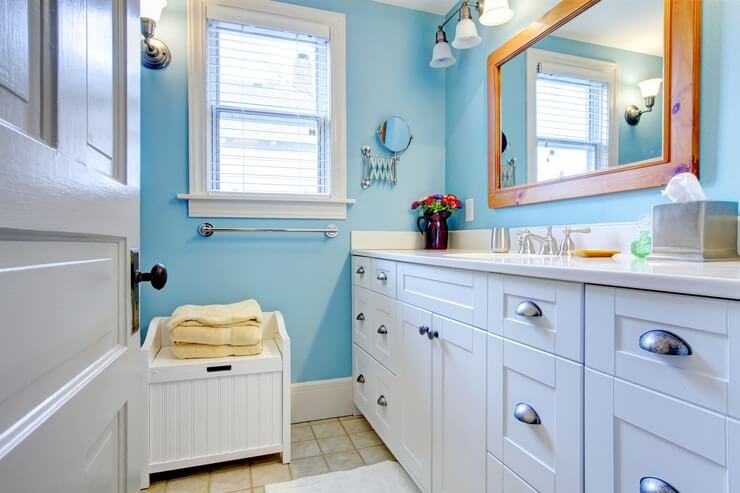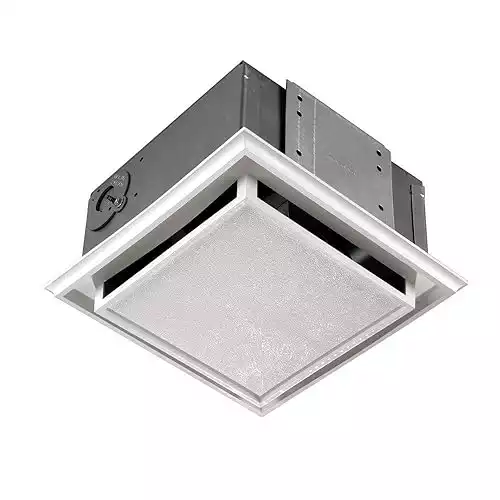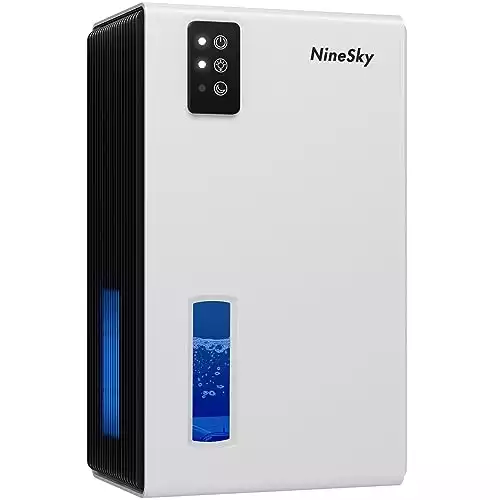Exhaust fans have been the dominant option when it comes to ventilating bathrooms, but are there other possibly better ways to ventilate the bathroom?
Bathroom exhaust fans are not your only choice to achieve proper ventilation. While ductless fans, open windows, and household fans can all vent your bathroom, there are building code restrictions to consider. Depending on your bathroom, an exhaust fan alternative could work out better.
It would be wise to inform yourself about all of the possible bathroom exhaust fan alternatives and any building codes that may apply to you.
Don’t feel as if you are forced to use an exhaust fan. Learn about these alternatives and use whatever works best for your bathroom.

Does a Bathroom Need an Exhaust Fan?
The main thing that limits your options whenever you install anything is building code restrictions.
While building codes were created for good reasons, they can become obstacles to trying new things.
Building codes vary from region to region, but in most places, you need to use an exhaust fan or have some type of outdoor ventilation for a full-size bathroom.
But if you have a half bath (just a sink and toilet), you are not required to use an exhaust fan.
This leaves you open to using any alternative you wish.
It’s always best to check the building codes in your area to avoid any fines and other issues down the road.
Ultimately you will need some way to fight moisture in your bathroom because if you don’t, mold and water damage will eventually develop.
Bathroom Exhaust Fan Alternatives
Ductless Bathroom Fans
Ductless bathroom fans are great for small bathrooms.
These fans don’t require the intensive work of an exhaust fan, such as cutting holes in your roof and routing ductwork.
With a ductless fan, you simply attach it to your wall or ceiling and plug it in.
This ductless fan circulates air past replaceable activated charcoal filter to continually cycle the air in enclosed spaces.
Ductless fans use a charcoal filtration system to remove moisture and odors from the air, and while they may not be as powerful as an exhaust fan, they can be quite effective in a small bathroom.
Household Fans
You can bring in a fan used elsewhere in your home, such as a box fan or oscillating fan, to act as an exhaust fan in your bathroom.
Small portable fans can also be used but are not that effective.
On the other hand, a large household fan can ventilate your bathroom properly and remove odors, especially when combined with an open door or window.
There are not many drawbacks to using these fans as they can be plugged in and turned on after a bath or shower and then taken out of the bathroom as needed.
However, since these fans have cords that may touch the ground, you will want to be cautious of electrical hazards.
Open Windows
Opening your windows is a very straightforward method to ventilate your bathroom.
If you have a small bathroom opening a window for a few hours can do wonders.
The type of window your bathroom has will play a part, as larger windows will be better for ventilation.
Unfortunately, some people have bathrooms with small windows that aren’t great for ventilation, windows that don’t open, or no windows at all.
Open Doors
Opening your bathroom door like opening windows is another exhaust fan alternative because it creates a way for moist air to escape.
You will want to combine an open door with a fan of some sort for this alternative to be truly effective.
Some people don’t have windows in their bathroom, but everyone should have a door.
The problem with leaving your bathroom door open is that unwanted bathroom odors can travel to other parts of your home.
Plants
Putting plants in the bathroom is an often overlooked way to reduce moisture and freshen the air.
Plants that have these abilities include English Ivy and Boston Fern, among others.
A plant will not remove as much moisture as an exhaust fan but can work for small bathrooms.
You also get the added aesthetic bonus of having plant life in the room.
The one drawback with plants is that they require attention, such as watering and proper sunlight, to thrive.
In addition, not all bathrooms will be suitable for plant life.
Dehumidifier
Dehumidifiers are a popular choice for bathrooms and other spaces in the home.
These air conditioning devices reduce the level of humidity in the air and maintain it.
When the humidity sensor reads there’s too much humidity in the air, it will automatically turn on.
Its robust performance, quiet operation, energy efficiency, and user-friendly features make it a solid choice for anyone looking to improve air quality and reduce excess moisture in their living spaces.
In some respect, a dehumidifier is better than an exhaust fan with its automatic sensors and timers.
But whether it is genuinely better is debatable.
Moreover, while a dehumidifier is excellent to have in any bathroom, a high-quality dehumidifier can be pretty expensive.
Final Advice
With all these alternatives, one thing they have in common is on their own, they are not as effective as the bathroom exhaust fan.
This is why exhaust fans remain prevalent.
The key is to combine these alternatives to match or even exceed the capability of an exhaust fan.
You can combine an open window, household fan, and moisture sapping plants and have an alternative that can work just as well as an exhaust fan at a much cheaper cost.
Combine these bathroom exhaust fan alternatives as you see fit and find the ventilation solution that works best for you.



